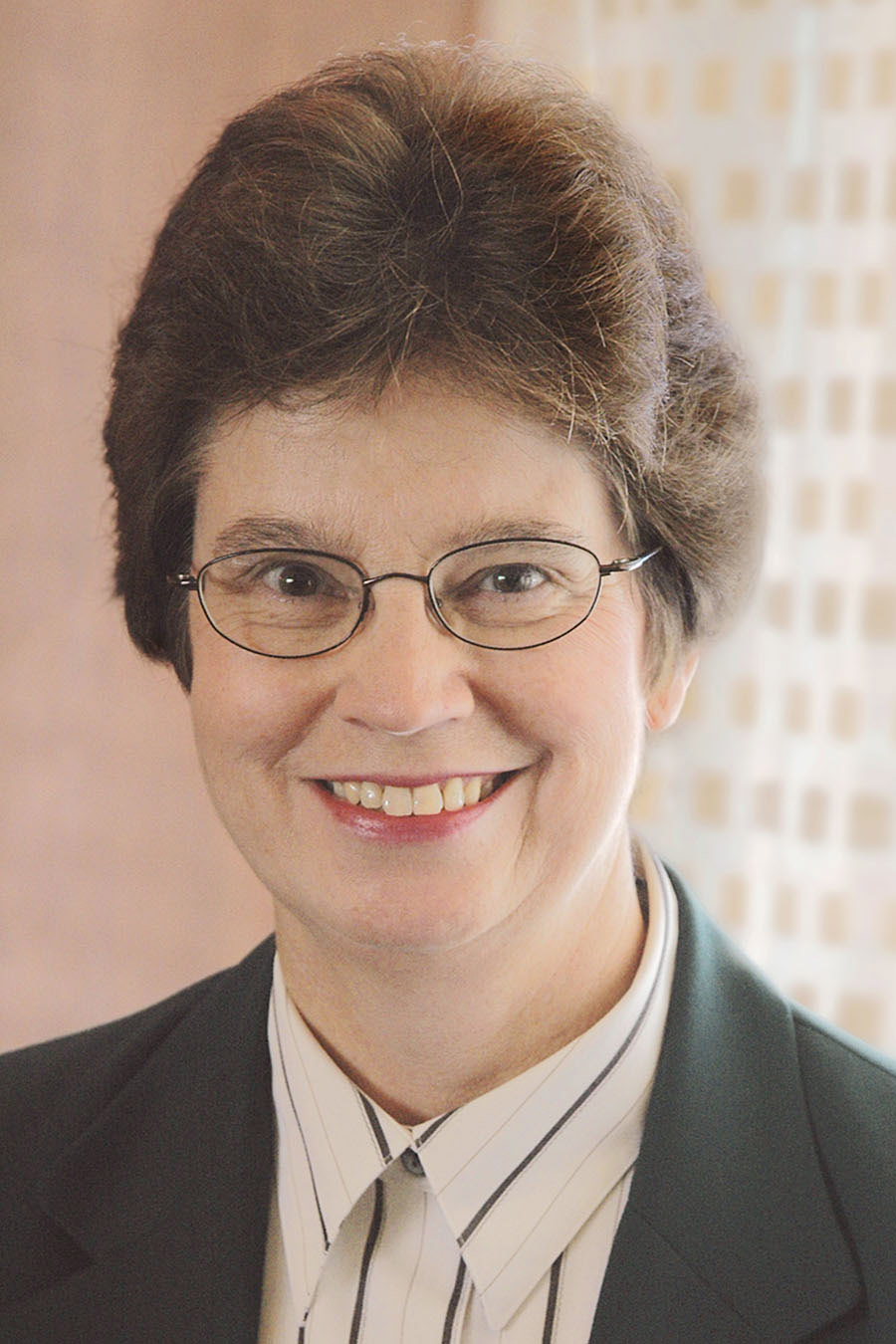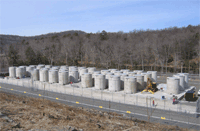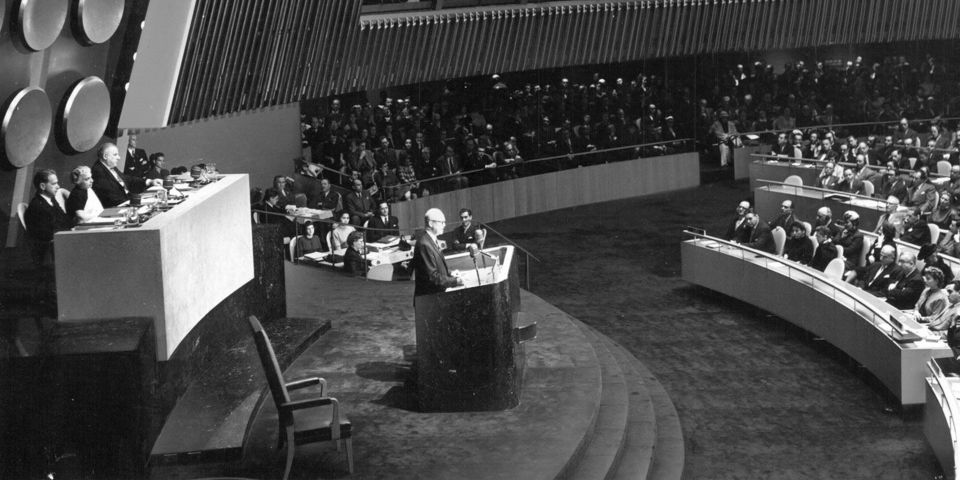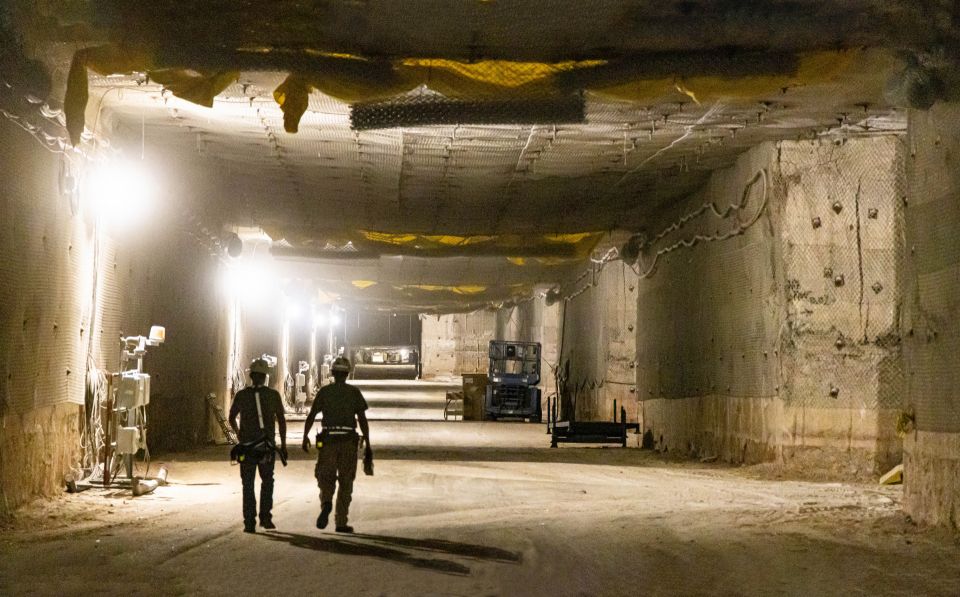Audeen Fentiman testifies before the Blue Ribbon Commission
On November 15, Audeen Fentiman testified before the Blue Ribbon Commission on America's Nuclear Future (BRC). The BRC was established by U.S. Secretary of Energy Steven Chu in January 2010 to provide recommendations for developing a safe, long-term solution to managing the nation's used nuclear fuel and nuclear waste. The BRC will provide advice and make recommendations on issues including alternatives for the storage, processing, and disposal of civilian and defense spent nuclear fuel and nuclear waste.

Fentiman
Dr. Fentiman provided testimony on behalf of the ANS Special Committee on Used Nuclear Fuel Management Options, which she chairs. In spring 2010, Thomas Sanders, then President of the American Nuclear Society (ANS), formed the ANS Special Committee to explore the options for managing used nuclear fuel. The ANS Special Committee's charge is to prepare a comprehensive report for members of the general public who want to understand the basics of used nuclear fuel management and for policy makers who must choose a path forward. The report will describe currently feasible used fuel management options and explore the advantages and disadvantages of each, including consideration of environmental, economic, and social factors as well as proliferation risks.
Dr. Fentiman's testimony is below in its entirety. Dr. Sanders previously testified before the BRC in May 2010 (for further information on Dr. Sanders' testimony, please see the May/June 2010 ANS News - member log-in required).

Testimony before the Blue Ribbon Commission on America's Nuclear Future
Audeen W. Fentiman - November 15, 2010
Representing the American Nuclear Society's Special Committee on Used Nuclear Fuel Management Options
Mr. Chairmen, commissioners, thank you for the opportunity to testify before the commission.
In spring 2010, then President of the American Nuclear Society, Dr. Tom Sanders, formed a special committee to explore the options for managing used nuclear fuel and asked me to serve as its chair.
The committee's charge is to prepare a comprehensive report for members of the general public who want to understand the basics of used nuclear fuel management and for policy makers who must choose a path forward. The report will describe currently feasible used fuel management options and explore the advantages and disadvantages of each, including consideration of environmental, economic, and social factors as well as proliferation risks.
It was not the committee's charge, nor its intention, to identify the "correct" storage, treatment, or disposal method. Rather, the committee focused on presenting the options and discussing the factors relevant to selecting methods for storage, treatment, and disposal.
Clearly, the methods selected will depend, in part, on the number and types of nuclear power plants operating in the United States for the remainder of this century. Committee members did not attempt to predict the mix of nuclear power plants, but rather we defined two bounding scenarios:
- Option 1 is a "no-growth" scenario in which all existing nuclear power plants operate for 60 years and then shut down with no new nuclear plants being built, and
- Option 2 is a "growth" scenario in which half of the growth in U.S. electricity demand between 2010 and 2100 is supplied by nuclear power.
We will complete our report by January 2011. However, we have identified our major conclusions.
 First and foremost, U.S. fuel cycle policy must be guided by stable and long-term program direction. Whether America's nuclear future is the orderly closure of the current nuclear plants or expansion of the nation's nuclear capacity with advanced technologies, a long-term, stable nuclear energy policy with clear objectives and milestones is critical. Utilities, used fuel program managers, contractors, and most importantly, the communities considering hosting any used fuel management facility must have confidence that they can make long-term plans.
First and foremost, U.S. fuel cycle policy must be guided by stable and long-term program direction. Whether America's nuclear future is the orderly closure of the current nuclear plants or expansion of the nation's nuclear capacity with advanced technologies, a long-term, stable nuclear energy policy with clear objectives and milestones is critical. Utilities, used fuel program managers, contractors, and most importantly, the communities considering hosting any used fuel management facility must have confidence that they can make long-term plans.
The ANS, along with many other organizations, supports the concept of an independent entity to manage the backend of the fuel cycle; others suggest that perhaps Congress and DOE can find a way to do it themselves. Either way, something has to change.
Second, the committee concluded that a geological repository will be needed under any conceivable scenario. It will be required for reprocessing wastes if the U.S. decides to recycle used fuel and for used nuclear fuel, itself, if we don't. In addition, it will be needed for defense wastes. The committee agreed that Yucca Mountain, salt formations, and deep bore holes are all feasible options for geological disposal that pose no technological showstoppers, just different engineering challenges.
 Third, the committee also concluded, rather obviously, that interim storage will be required. We are already storing used nuclear fuel at the reactor sites-in pools and dry storage casks, and the NRC has recently ruled that it will be safe there for 60 years after the reactor's license expires. The committee felt that if a deep geologic repository is licensed or used fuel reprocessing commences in the next 20 years, there may be no need for a separate centralized storage facility. If not, centralized interim storage will almost certainly be needed, but, again, should present no major technological challenges.
Third, the committee also concluded, rather obviously, that interim storage will be required. We are already storing used nuclear fuel at the reactor sites-in pools and dry storage casks, and the NRC has recently ruled that it will be safe there for 60 years after the reactor's license expires. The committee felt that if a deep geologic repository is licensed or used fuel reprocessing commences in the next 20 years, there may be no need for a separate centralized storage facility. If not, centralized interim storage will almost certainly be needed, but, again, should present no major technological challenges.
Reprocessing may make economic sense at some stage. The decision needs to be made with a long term perspective that considers the prospects of fast reactor deployment and the possibility of taking back used fuel from other nations. We looked at two reprocessing options:
- Option 1 - Limited reprocessing and recycling of used nuclear fuel into light-water reactors with reprocessing wastes permanently disposed of underground, and
- Option 2 - Full recycling of used nuclear fuel using fast reactors with fission products and other reprocessing wastes permanently disposed of underground.
The committee felt that while MOX fuel is of limited use in light-water reactors, it is much more valuable in fast reactors where it can be recycled multiple times. Option 1 should, therefore, be considered as an interim step toward Option 2, full recycling in fast reactors. It may be worthwhile to develop reprocessing capability and begin building an inventory of MOX fuel while the U.S. reactor fleet still consists primarily of light-water reactors-if it is clear that fast reactors will be coming on line in the future. The United States could also decide to pursue Option 1 if providing used fuel reprocessing services to other countries appears to be a way to avoid nuclear proliferation.
Aqueous reprocessing has been used worldwide for decades, and advanced aqueous reprocessing technologies are under development, primarily motivated by the recovery of other minor actinides to reduce toxicity of the remaining waste and to enhance proliferation resistance. Pyroprocessing is another reprocessing technique that is being investigated for metal fuels and may have some applications for oxide fuels.
If and when fast reactors are in place, there will be a strong incentive for full actinide recycling. Used fuel from fast reactors has as much or more fuel value than the fresh fuel put into the reactor, but it must be reprocessed to separate the useable fuel from the waste products. Since Option 2 requires the use of fast reactors, evaluation of this option must include consideration of capital costs associated with the development of fast reactors. A "cradle to grave" cost-benefit analysis will have to take into account the total impacts of uranium enrichment, fuel fabrication, fuel recycling, reactor construction and operation, and waste disposal.
Again, I must point out that for both the limited and full recycle options, high-level waste will be produced from reprocessing and recycling activities and will require a permanent disposal facility. Numerous studies have been conducted on the impacts of reprocessing on repository performance. In general, as radiotoxicities of waste are reduced by reprocessing, the potential for releases from the repository and impacts on humans and the environment will be reduced.
 One of my colleagues asked me, "But what is the big news in this report?" The big news is that there is no news. For fifty years, plans for developing nuclear power have included interim storage facilities, deep geologic repositories, and usually, reprocessing/recycling facilities.
One of my colleagues asked me, "But what is the big news in this report?" The big news is that there is no news. For fifty years, plans for developing nuclear power have included interim storage facilities, deep geologic repositories, and usually, reprocessing/recycling facilities.
This is not rocket science. The main obstacles to a rational fuel cycle policy are political, financial and social, not technological. We, therefore, urge the commission to focus on the management mechanisms needed to create a stable, durable fuel cycle policy. I am highly confident that the men and women of the American nuclear community can take care of the rest.





